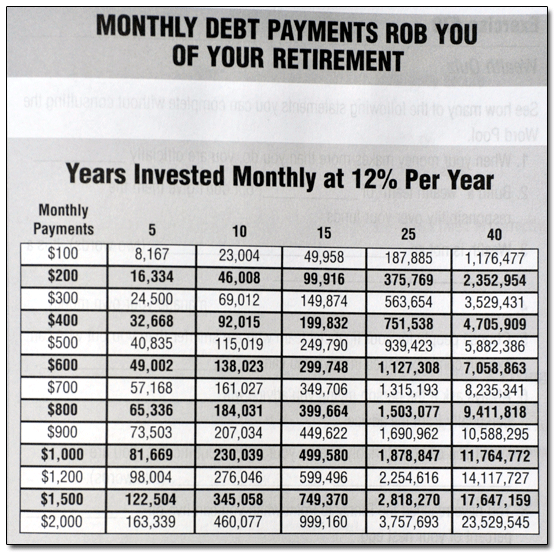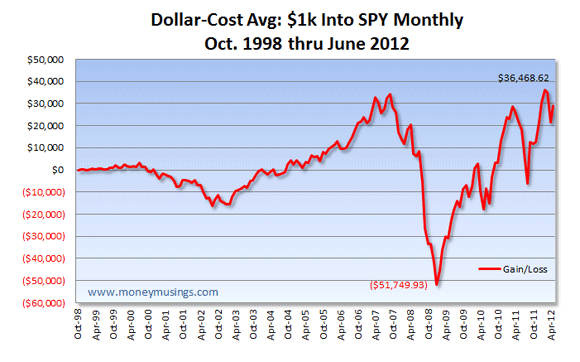This, friends, is easily the one thing about Dave Ramsey that pisses me off the most. This particular table comes from Dave’s Total Money Makeover Workbook, page 229:

The point of that data is pretty simple: If you’re not making payments to anyone other than yourself, AND if you’re willing to work hard, you can accumulate a lot of money in a pretty short amount of time.
Now, I agree with that premise wholeheartedly. Heck — I’m seeing it play out in my own life. Our only debt payments go to the mortgage company, and further, those same mortgage payments (15-year, fixed-rate loan) take up less than 15 percent of our monthly take-home income. (For those who care, Dave’s recommended upper boundary for mortgage payments is 25 percent of take-home pay.)
So, because there aren’t any car payments or student loans or credit-card debts sucking cash out of our accounts, we have a lot of leeway in directing our money where we want it to go.
No, my problem is with the “12 percent returns” Dave loves to talk about SO VERY OFTEN. And, as noted by the chart above, use as a reference point in his books.
Here’s the text that accompanies the chart:
Exercise #69
Consult the chart below.
- Determine how many years you have to retirement … or to the place you’d like to set as your Pinnacle Point.
- Determine how much you have to invest each month to get there.
At your current rate of investing, how long will it be before you reach the Pinnacle Point? Are you willing to invest more each month?
Oy.
“Invest your money in good growth-stock mutual funds,” Dave always tells radio listeners, “and in twenty years, earning twelve percent a year, you’ll be a fobzillionaire!” Or something along those lines.
Well, yeah. At annual earnings of 12 percent, the math works.
But it’s getting that “average 12 percent per year” return that might cause some consternation.
Like It’s a Given
Dave throws this figure out there constantly. Like it’s inevitable. Like it’s a given.
That, at least, is how I hear it.
And it never fails to make me cringe. (As I’ve mentioned before.)
It seems to me that when you’ve had a few decades of economic “growth” built upon declining and/or stagant wages for the lower and middle classes, coupled with repeated injections of massive debt at every level of society — how else to make up the difference and still keep asset prices high? — then it’s at least worth considering that maybe investment returns going forward will come with a level of risk that’s not conducive to double-digit expectations.
Am I alone in this thinking?
Because some days — like when I come across the chart above — it sure feels like it.



